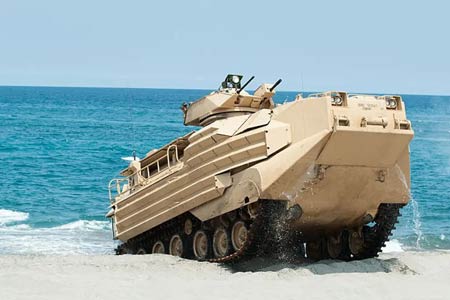- +91-8624883983
- info@insightsmicro.com
Marine Vehicles : Global Trends, Facts and Figures

The motivation behind this is consideration of the whole marine vehicles market, which is a new paradigm of the manufacturing industry, as it provides versatile components essential for the operation, testing, and also the maintenance operations of different kinds of marine vessels. The marine vehicles industry utilizes certain parts for commercial, military, and recreational purposes. Their constituents rely on these parts for functions such as propulsion, navigation, and safety equipment. With the development of urban lifestyles and the appreciation of environmentally friendly marine transport, health measures are being improved, enhancing the growth of marine vehicle spare parts.
The global marine vehicle parts market size, as of 2024, is estimated to be a little bit over forty-five billion dollars, with a compound annual growth rate of 4.8% over the forecast period of 2024–2030. Growing global commerce will increase demand for even more marine accessories. Another thing that will help the market grow is that more and more investments are being made to build a fantastic maritime infrastructure that will allow more boating for fun and better marine technology. Major regions of this market include North America, Europe, Asia-Pacific, the Middle East, and Africa.
Global Marine Vehicles
Overview
The motivation behind this is consideration of the whole marine vehicles market, which is a new paradigm of the manufacturing industry, as it provides versatile components essential for the operation, testing, and also the maintenance operations of different kinds of marine vessels. The marine vehicles industry utilizes certain parts for commercial, military, and recreational purposes. Their constituents rely on these parts for functions such as propulsion, navigation, and safety equipment. With the development of urban lifestyles and the appreciation of environmentally friendly marine transport, health measures are being improved, enhancing the growth of marine vehicle spare parts.
The global marine vehicle parts market size, as of 2024, is estimated to be a little bit over forty-five billion dollars, with a compound annual growth rate of 4.8% over the forecast period of 2024–2030. Growing global commerce will increase demand for even more marine accessories. Another thing that will help the market grow is that more and more investments are being made to build a fantastic maritime infrastructure that will allow more boating for fun and better marine technology. Major regions of this market include North America, Europe, Asia-Pacific, the Middle East, and Africa.

Types & Definition
First, the industry of marine vehicles follows a cycle of designing, manufacturing, distributing, and selling any component or system that is used to either construct, maintain, or repair a vehicle on water. This is inclusive of propulsion, navigation, safety, and other electronic functions that are key in the efficient running of vessels.
1. Propulsion Systems- Includes but is not limited to engines, propellers, gearboxes, thrusters, etc.
2. Navigation Components or Communication Devices- GPS units, radars, sonars, VHF radios, etc.
3. Equipment for Ensuring Safety and Security Purposes- Life jackets, fire extinguishers, beacon locator devices, etc.
4. Hull and Structural Materials- Paints, welding rods, ballast tanks, etc.
5. Fuel Systems and Power- Diesel and gasoline engines, hybrid systems, and other alternate energy options.
6. Decorative Interior Systems- Winch, anchoring systems, and seats.
Industry Trends
1. Smart & Sebtry Marine Technologies- IoT to be used for marine applications for the first time for many purposes, simply for real-time control and diagnosis enhancement.
2. Booming Recreational Boating and Yacht Industry- More money is spent on leisure activities involving the sea.
3. Green and E-mob include approaches to the marine sector- a plan of limited use of biofuels and propulsion systems.
4. AI and automation-based components- the ability of the vessel to operate more effectively with the use of safety and navigation systems generated by AI.
5. Oceans Environment Aware Issues Strategies - Going toward the renewed parts, materials that represent offshore windmills and ocean power fields are an increasingly demanded subject.
Facts & Insights
Green Propulsion: Increase in use of hybrid and electric vessels due to harsh environmental policies.
Autonomous Systems: We are forwarding components' improvements related to AI and unmanned ship operations.
More sea-based trade: There has been an increase in the world’s volumes of shipping, making repair and maintenance of sea vessels and parts necessary.
Print and Assemble: Advantages of additives for decades of spare parts production in India.
Seeking a more environmentally friendly approach: Motorcycle manufacturers are forced to rethink their technology as emission standards become more severe.
Market Segment
The Component Type:
1. Encompasses propulsion
2. Navigation
3. Safety
4. Structural
5. Power systems.
Vessel Type:
1. Talks about cargo ships
2. Military vessels
3. Yachts
4. Fishing boats
5. Offshore platforms.
Distribution Channel:
1. OEMs
2. Aftermarket
3. Online Retailers.
Region:
1. The study covers North America
2. Europe
3. Asia-Pacific
4. Middle East & Africa
5. Latin America regions.
Industry Leader
1. Rolls Royce Maritime- What stands out especially is the systems encompassing marine floor propulsion and automation.
2. MAN Diesel & Turbo- An energy-efficient engine and hybrid propulsion expert.
3. GE Marine- Service provider of propulsion and energy systems.
4. Wärtsilä- leading company in increasing ship efficiency, hybrid systems, and automation products.
5. ABB Marine & Ports- Offer electric drive and hybrid propulsion solutions for ships.
6. Cummins Marine- The Design and Manufacturing of Performance and Reliable Marine Diesel Engines.
7. ZF Marine Propulsion Systems- No. 1 producer of marine gearbox systems.